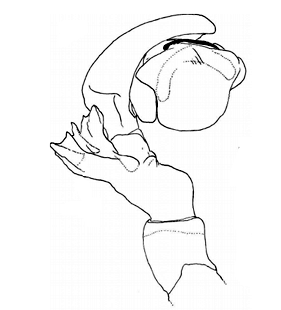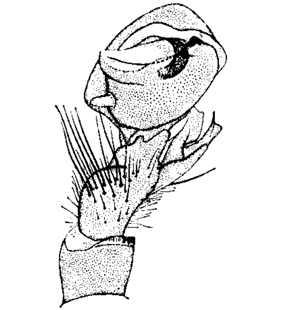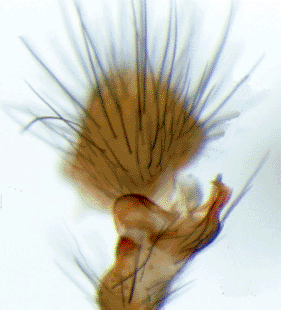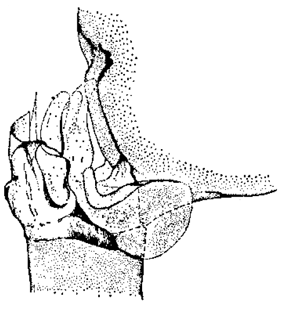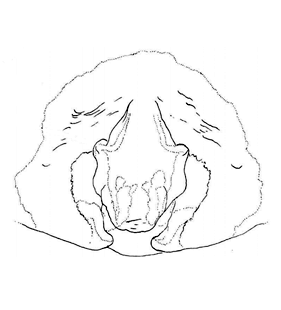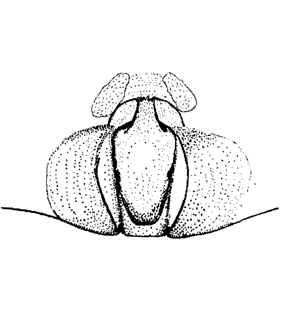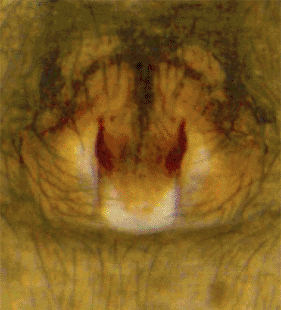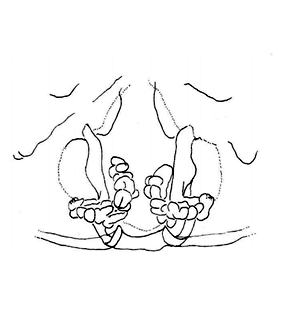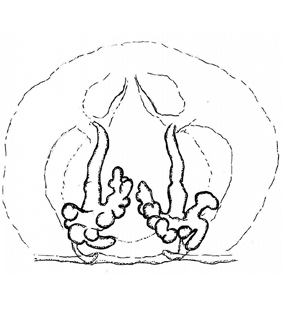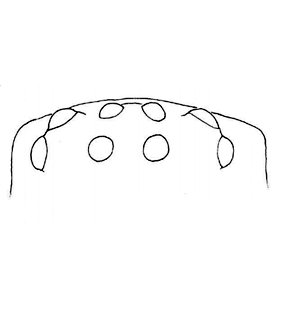Pandava laminata (Thorell, 1878)
Description
Male
Pedipalp: Tibia longish with a distinct kink. Prolateral tibial apophysis with several tips and edges, partly merged. Colouration reddish-brown, dark brown to suffused with black.
Body length male: 5.8 mmFemale
Epigyne semi-circular, somewhat wider than long. Broad median septum, converging anteriorly and posteriorly, not reaching epigastric furrow.
Body length female: 5.2-7.5 mmAdditional information
This species of Asian origin is not native to Europe (alien species). It had been introduced to Europe and did establish.
Distribution
Figures
Distribution List
"No references" does not mean that the species does not occur in this country, but that we have not yet inserted the reference for it. We are working on it.
References
Blick T, Finch O-D, Harms K H, Kiechle J, Kielhorn K-H , Kreuels M, Malten A, Martin D, Muster C, Nährig D, Platen R, Rödel I, Scheidler M, Staudt A, Stumpf H, Tolke D (2016) Rote Liste und Gesamtartenliste der Spinnen (Arachnida: Araneae) Deutschlands. 3. Fassung, Stand April 2008, einzelne Änderungen und Nachträge bis August 2015. Naturschutz und Biologische Vielfalt 70/4: 383-510 ![]()
Jäger P (2008) Pandava laminata, eine weitere nach Deutschland importierte Spinnenart (Araneae: Titanoecidae). Arachnologische Mitteilungen 36: 4-8 ![]()
Lehtinen P T (1967) Classification of the cribellate spiders and some allied families, with notes on the evolution of the suborder Araneomorpha. Annales Zoologici Fennici 4: 199-468 ![]()
Parker B (2020) A new spider species for the United Kingdom – Pandava laminata (Thorell, 1878). Newsletter of the British Arachnological Society 149: 17-18 ![]()
Pfliegler W P, Pfeiffer K M, Grabolle A (2012) Some spiders (Araneae) new to the Hungarian fauna, including three genera and one family. Opuscula Zoologica, Budapest 43: 1-8 ![]()
Rozwałka R, Bielak-Bielecki P (2017) First records of the alien spider Pandava laminata (Thorell, 1878) (Araneae: Titanoecidae) in Poland. Fragmenta Faunistica 59: 121-126 ![]()
WSC (2025) World Spider Catalog. Version 26. Natural History Museum Bern, online at http://wsc.nmbe.ch (28.2.2025) doi: 10.24436/2 ![]()
